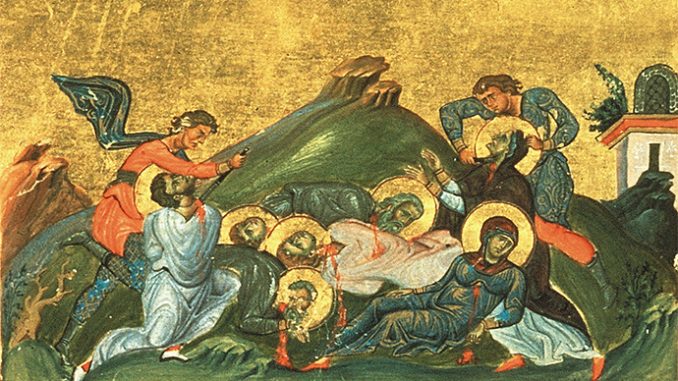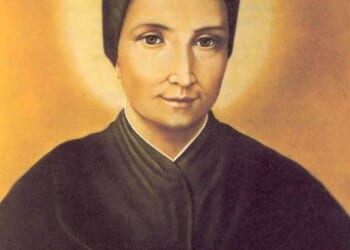
The expression “caught on the horns of a dilemma” derives from the undesirable situation of facing a charging bull and having to choose which horn to be gored upon. Life is full of such terrible choices, made between the rock and the hard place. The dilemma was a favorite subject of the ancient Greek playwrights, who sensed the associative drama of excruciating quandaries and presented them as bitter and brutal twists of Fate.
The ancient Romans applied their twist by engaging the dilemma. As overstuffed conquerors, they made the dilemma more of a dramatic reality than the stage tragedies of the Greeks, bringing the spectacle of pain and insufferable choice to the gladiatorial arena. The Romans would watch true tragedy play out before their eyes instead of through the media of mask and imagination.
But there were moments in the arena when those pressed against the impossible dilemma of life and death demonstrated a solution that seemed even more impossible. Out of the madness of the ring rose a sanity of salvation with martyrs who faced the dilemma: live in shame or die in anguish. In doing so, they united the horns into a single redeeming point that could not be ignored. The martyrs showed the world how to die in order to live.
Famous and glorious among the early martyrs are two heroines who conquered the dilemma of mortal submission and mortal sin in third-century Carthage, in the North African region of the Roman Empire. March 7 celebrates their sudden death and eternal life, immortalizing the story of the handmaiden, Felicity, and her noble mistress, Perpetua, who together overthrew the dilemma of the pagan world in facing their own in the literal manifestation of two horns on a mad beast.
Under the decree of the Roman Emperor Septimius Severus, Christians were forbidden as imperial subjects. Early enforcement of the decree brought five catechumens under judgment in Carthage: three men named Revocatus, Saturninus, and Secundulus; and two women named Felicity and Perpetua. Perpetua was the daughter of a pagan nobleman, married and mother to a young son. Felicity was Perpetua’s slave and was herself an expectant mother.
Perpetua’s father, according to the record of her diary, applied a pressure on his daughter more dreadful than her captors to abandon the Faith she had embraced. The young woman was unwavering, however, with her loyal servant, Felicity, steadfast by her side. In these earliest of writings from a Christian woman, Perpetua expressed how the dungeon’s dank heat and oppressive darkness were petrifying, but also how she and Felicity supported each other for the sake of Christ. Felicity assisted Perpetua in tending her infant in the filth of their cell even as she agonized over the birth of her own baby, for the law protected pregnant women from being torn apart by animals in the arena.
But the grace and grit of baptism kept their fear under control as the Holy Spirit filled their hearts with courage. With this calm and confidence, Perpetua and Felicity shared visions of ascending the ladder of divine ascent to green fields and grazing sheep, leaving their ordeal far behind. When Felicity delivered a little girl in the dungeon, her baby was taken to safety by her sister, and Perpetua’s mother took her grandson after her husband’s last-ditch attempt to turn Perpetua from her faith failed.
When the spectators in the amphitheater saw two young women brought to face their fate, all were struck by the spirit that blazed in their eyes. Here was not the travail of dilemma: the wavering, pleading, pathetic struggles which brought them aberrant entertainment. Here was confidence and resolution, and a towering sight it was to see the noblewoman and her servant standing side by side as equals in faith, ready to die for a God Who would give them everlasting life.
Refusing to drape themselves in the robes of pagan priestesses as a mockery, Felicity and Perpetua women were stripped. Rough nets were thrown over their bodies as a wild heifer was released in the arena. The crowd roared. The women survived the beast’s initial rush and were taken aside, dressed in smocks, and thrown back. Raging and bellowing, the cow gored Perpetua in the thigh; with Felicity’s help, she rose to her feet, covered her bleeding leg with her torn garment and re-secured her hair that had come loose in her fall.
They would die together with dignity and never appear to grieve in their glory.
The mob screamed for the kill. Gladiators approached Felicity and Perpetua with glinting blades. It was then that Perpetua caught sight of her brother in the crowd, silently mourning as people shrieked for his sister’s death. “Stand fast in the faith and love one another,” she called out, “and do not let our sufferings be a stumbling block to you.” The women embraced and bowed before their executioners. The swords flashed. Felicity fell. But the gladiator who struck at Perpetua hesitated before her noble bearing. His arm faltered and his blow failed. The dying woman reached out and, taking the sword in her hand, she guided it to her heart.
Felicity and Perpetua entered the heavenly kingdom side by side, just as they had perished, wearing the bright crowns reserved for those who choose to lay down their lives for Christ. And that same Christ will save us even as He saved Felicity and Perpetua, and all their brothers and sisters, in the fire of His love, giving them the strength to abide the end with every grace of peace, hope, and perseverance.
There is nothing higher that we can choose than this, especially as profane pressures grow more tense, and the murmur of renewed religious persecutions grows louder. A new age of martyrs may very well be upon modern-day Christians, with the catch-22 of apostasy or agony. And though it may not be a martyrdom of being gored by wild beasts and slashed with swords, there are degrees of surrendering to the secular and standing firm in the faith.
The paradox of the dilemma of martyrdom is that the martyrs make it out to be anything but an impasse. Martyrdom is a clear choice for those who believe. And such action is almost always paradoxical. It is Peter walking on water and choosing an upside-down crucifixion. It is Joan of Arc fighting for France and choosing the stake. It is Thomas More serving the King of Kings and choosing the ax. It is Isaac Jogues bringing salvation to the Mohawks and choosing the tomahawk. It is Maximilian Kolbe ministering as a wartime priest and choosing the starvation bunker.
The martyrs transcend the dilemmas the world thrusts against them, climbing beyond the gallows tree to higher climes.
So it was with Felicity and Perpetua, their names canonized in the Canon of the Mass. Though literally thrown on the horns of a lowing dilemma, these holy women showed how the Lord brings his chosen through the impossible predicaments into a clear path and complete peace—to perpetual felicity. Whatever dilemmas await each of us in our witness for the one true faith, let our choice stand as clear and true as that of Sts. Felicity and Perpetua.
If you value the news and views Catholic World Report provides, please consider donating to support our efforts. Your contribution will help us continue to make CWR available to all readers worldwide for free, without a subscription. Thank you for your generosity!
Click here for more information on donating to CWR. Click here to sign up for our newsletter.








